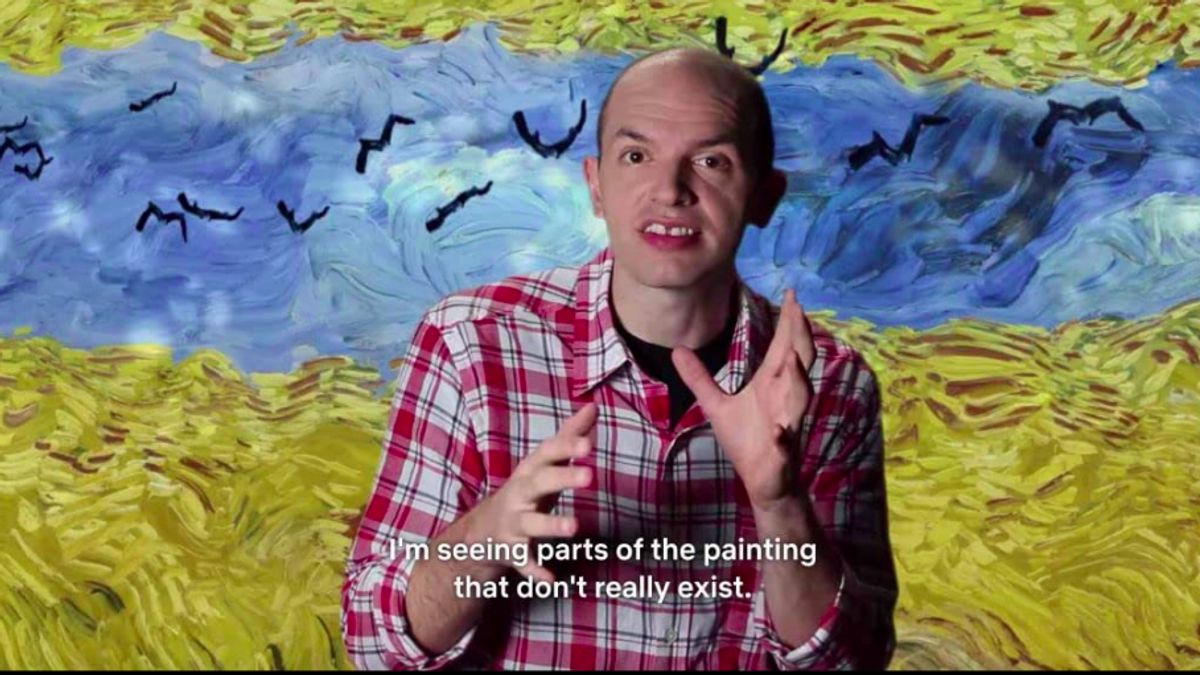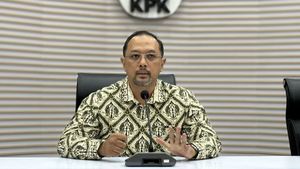JAKARTA - The young actor, Jeff Smith, was arrested again by the police for drugs. After being caught using marijuana, this time the police confiscated LSD (Lysergic Acid Diethylamide). Both contain hallucinogenic substances, which are also known as psychedelic drugs. This is the story of the psychedelic revolution in the world: the history, culture, and politics of the psychedelic way of life that is now being defended.
"I don't think psychedelics are the answer to all the problems in the world. But psychedelics can be a start," Sting said in an interview in the Netflix documentary Have a Good Trip.
In the documentary, Sting and a number of other celebrities, including Deepak Chopra, ASAP Rocky, Sarah Silverman, Nick Kroll, Ben Stiller, Paul Scheer, Anthony Bourdain to Carrie Fisher recount their experiences of consuming psychedelic substances and how it affected their lives.
Yes. Psychedelic is a way of life. It affects the way we think, the way we see things, even how we enjoy life. The film, directed by Donick Cary, also examines psychedelic realities and slays social stigma and lasting institutional discredit.
The testimonies that are woven from the mouths of one celebrity and another, plus representative animations plus historical explanations and presentations from the side of knowledge make Have a Good Trip easy to understand. We, even the layman, will be able to imagine the spiritual process that goes on in the psychedelic journeys that celebrities go through.
Yes, although of course it will not be full because psychedelic is a spiritual experience. Sting continued his story by saying, "When I had a bad trip, I realized it was exactly what I needed."

Sting's statement emphasized that even when he had bad experiences in the psychedelic dimension, he still got something to instill in him. Bad trips due to psychedelic substances which are also often associated with sudden permanent insanity are also refuted in this film. Dr. Charles Grob, UCLA professor of psychiatry quashed this prejudice.
According to Grob, a person's psychedelic experience is shaped by subjective character. That is, an unstable mindset when people consume psychedelic substances that creates a bad trip vulnerability. And it's situational. Not permanent. Indeed, in uncontrolled amounts of consumption, psychedelic compounds can affect the balance of biological substances in the brain.
But that psychedelics are substances that drive you crazy instantly, is an obsolete lie. We will discuss this social and political stigma later. What is clear, Grob continues, is that a psychedelic journey is a spiritual experience that prompts people to confront their deepest conflicts and sources of anxiety.
This will create clarifications in the human mind and attitude. Carrie Fisher corroborated Grob's statement. He tells how psychedelic substances help him understand and recognize himself. Very important for a Carrie Fisher whose self-identification she discovers more than anyone else's eyes.

Carrie Fisher is bipolar. The character's fame as Princess Leia dichotomizes her feelings of living as Leia instead of Carrie. And a psychedelic journey on LSD helps Carrie deconstruct her identity again.
"When I was first told I was bipolar, I went to the doctor and I said, 'Yeah, I'm feeling normal with acid,'" Carrie said.
Psychedelic therapy
March 2021 gave birth to a historic moment. For the first time, the hallucinogenic drug dimethyltryptamine or DMT has been tested as a potential drug for depression.
Quoted by the BBC, the researchers hope DMT can be an alternative for people whose depression is not successfully treated by conventional pills. They believe that therapy using psychedelic drugs is a long-term solution to treat symptoms of depression.
"We believe the effects will be immediate, and longer lasting than conventional antidepressants," said Carol Routledge, who leads the group of scientists at Small Pharma, the pharmaceutical company that conducted the trial.
DMT is known as the 'spirit molecule' because it works by turning a person's consciousness into hallucinations that are related to the experience of dying. As described by Gaspar Noe in Enter The Void.
DMT is the active ingredient in ayahuasca, a traditional medicinal plant that grows in the Amazon rainforest. Although the researchers found a reaction to the use of DMT on the smooth functioning of the brain, they said this study is still to be explored.
Before DMT, psychedelic substances that had been tested as psychiatric therapy were magic mushrooms. A number of studies have found various benefits of the substance psylocibine that causes hangovers in people with depression.
A number of states in the United States (US), such as Denver and Oregon have even legalized the use of magic mushrooms for therapy. Some other countries, such as Australia are still exploring research after study to achieve a national 'highest consciousness'.
However, in a recent study, April 2021, scientists in the UK found that the psychedelic compounds in magic mushrooms even have benefits on par with antidepressant drugs. This is certainly an important moment when we are asked to choose between therapeutic substances that are grown from nature or created chemically.
"One of the most important aspects of this work is that people can clearly see the therapeutic potential of properly administered psilocybin," said Robin Carhart-Harris, Head of the Center for Psychedelic Research at Imperial College, London. UK, quoted Healthshots.
Then, what about marijuana? No need to ask again the benefits. Even LSD, if you look at history, the acid compound was created with a medical purpose, namely to treat respiratory ailments. LSD was then politicized to the point of bearing a very bad social stigma.
In Indonesia, in Law Number 35 of 2009 concerning Narcotics, LSD is categorized as a class I narcotic. In that classification, marijuana and magic mushrooms are also registered.
The world's first 'LSD trip' took place decades ago. It was Albert Hofmann who suddenly experienced extraordinary hallucinations in the middle of his working hours at the pharmaceutical laboratory, Sandoz at that time. Hoffman accidentally consumes LSD-25, a synthetic drug that he created himself.
In 1938, Hoffman created LSD-25 as part of research into the medicinal value of the compound lysergic acid. LSD was then officially recognized as the origin of lysergate diethylamide.
Citing History, Hofmann then recounted his experience. He explained in detail how he felt an extraordinary sensation such as imagination and dreams that at that time made him uncomfortable.
“Last Friday, April 16, 1943, I was forced to stop my work in the laboratory at noon and go home because I was affected by extreme anxiety, coupled with a slight dizziness. At home I lay and drowned in unpleasant conditions," he said.
"Like a hangover characterized by a highly stimulated imagination. In a dream-like state, with my eyes closed (because I feel the dazzling daylight is unpleasant), I feel an unbroken fantastic image, an extraordinary form with an intense kaleidoscopic play of color. After approx. two hours, this condition fades.”
Hoffman had been synthesizing LSD for the previous five years, in hopes of treating respiratory ailments. However, the drug did not produce results in curing respiratory diseases.
Therefore Hoffman then stopped researching it. To test the theory that LSD might have something to do with a strange reaction he was having in the lab, Hoffman purposely took more of the drug a few days later.

This time Hoffman's experience was more troubling. But Hoffman had anticipated it by asking his lab assistant to escort him as he cycled home. A wise choice because Hoffman's anxiety was real.
On his way home, Hoffman saw that his neighbor looked like an evil wizard. Hoffman thought he was going crazy. A doctor was called. But the doctor found nothing physically wrong with Hoffman. Hoffman then gradually improved. The overwhelming psychedelic sensation faded away.
"Kaleidoscopic, fantastical images surged through me, alternating, variegating, opening and then closing themselves in circles and spirals, exploding in colored fountains, rearranging and hybridizing themselves in constant flux," quoted from the Multidisciplinary Association for Psychedelic Studies. .
Hoffman quickly came to the conclusion that LSD could be a powerful tool for treating people with psychiatric conditions, although he couldn't imagine anyone using it for recreational purposes. Sandoz's party agreed and patented LSD in 1947, marketing it to psychiatrists to give to mentally ill patients.
Pharmaceutical companies also recommend that therapists take the drug so they can better understand their patients. Over a 15-year period beginning in 1950, research into LSD and other hallucinogenic substances resulted in more than a thousand scientific papers and several dozen books.
LSD was then prescribed as a treatment for more than 40,000 patients, including the likes of movie star Cary Grant. Many psychiatrists have also started using the drug recreationally and sharing it with friends.
At the same time, intelligence agencies, such as the CIA, began to study LSD as a potential chemical weapon. The reason, as one researcher put it:
LSD is capable of rendering entire groups of people, including military forces, indifferent to the environment and situations, disrupting planning and judgment, and even creating uncontrollable fear, confusion and terror.
Political pressure on LSD
Pressured by public officials who were dismayed by the spread of LSD among the general public, Sandoz stopped producing it in 1965. But it was too late.
Supported by the likes of Harvard psychologist Timothy Leary, LSD was already a core component of counterculture in the '60s. In response, the US government banned the drug in 1966.
Extensive research on LSD ended in 1980. Grant money had dried up because no one wanted to be linked to the drug that public officials and law enforcement agencies targeted.
However, in March 2014, nearly 40 years since the last clinical trial on LSD, the Journal of Nervous and Mental Disease published the results of a study, in which 12 people in Switzerland -- most of them terminal cancer patients -- were given LSD as part of their therapy. .
The researchers wanted to see if the drug could help them cope with the death that awaited them. One of the patients, a 67-year-old man reported that he met his long-dead and estranged father somewhere in the universe.
He nodded. He also gave testimony. LSD could not save him from death. But LSD was able to help his soul face death.
*Read other information about KNOWLEDGE or read other interesting articles from Putri Ainur Islam and Yudhistira Mahabharata
Other BERNASThe English, Chinese, Japanese, Arabic, and French versions are automatically generated by the AI. So there may still be inaccuracies in translating, please always see Indonesian as our main language. (system supported by DigitalSiber.id)









